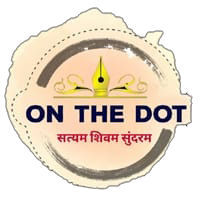Namaste!
How else should I begin this post!
Namaste – Pressing hands together with a smile to greet. Namaste is the most commonly used greeting in India. Very often, when people realize you are an Indian, they fold hands and greet you with a Namaste.
Indian greetings are based on Anjali Mudra, including Pranama and Puja. Greetings include Namaste (Hindi, Sanskrit and Kannada), Nomoskar in Odia, Khulumkha (Tripuri), Namaskar (Marathi), Namaskara (Kannada and Sanskrit), Namaskaram (Telugu, Malayalam), Vanakkam (Tamil), Nomoshkar (Bengali), Nomoskar (Assamese), Aadab (Urdu), and Sat Shri Akal (Punjabi). All these are commonly spoken greetings or salutations when people meet and are forms of farewell when they depart. Namaskar is considered slightly more formal than Namaste but both express deep respect. Namaskar is commonly used in India and Nepal by Hindus, Jains and Buddhists, and many continue to use this outside the Indian subcontinent. In Indian and Nepali culture, the word is spoken at the beginning of written or verbal communication. However, the same hands folded gesture may be made wordlessly or said without the folded hand gesture.
The word is derived from Sanskrit (Namah): to bow, reverential salutation, and respect, and (te): “to you”. Taken literally, it means “I bow to you”. In Hinduism it means “I bow to the divine in you.” In most Indian families, younger men and women are taught to seek the blessing of their elders by reverentially bowing to their elders. This custom is known as Pranama.
Other greetings include Jai Jagannath (used in Odia) Ami Aschi (used in Bengali), Jai Shri Krishna (in Gujarati and the Braj Bhasha and Rajasthani dialects of Hindi), Ram Ram/(Jai) Sita Ram ji (Awadhi and Bhojpuri dialects of Hindi and other Bihari dialects), and Sat Sri Akal (Punjabi; used by followers of Sikhism), As-salamu alaykum (Urdu; used by follower of Islam), Jai Jinendra (a common greeting used by followers of Jainism), Jai Bhim (used by followers of Ambedkarism), Namo Buddhay (used by followers of Buddhism), Allah Abho (used by followers of the Bahai Faith), Shalom aleichem (used by followers of Judaism), Hamazor Hama Ashobed (used by followers of Zoroastrianism), Sahebji (Persian and Gujarati; used by the Parsi people), Dorood (Persian and Gujarati; used by the Irani people), Om Namah Shivaya/Jai Bholenath Jaidev (used in Dogri and Kashmiri, also used in the city of Varanasi), Jai Ambe Maa/Jai Mata di (used in Eastern India), Jai Ganapati Bapa (used in Marathi and Konkani), etc.




